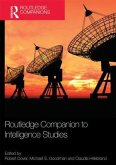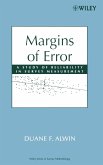Signal detection theory, as developed in electrical engineering and based on statistical decision theory, was first applied to human sensory discrimination about 40 years ago. The theory's intent was to explain how humans discriminate and how we might use reliable measures to quantify this ability. An interesting finding of this work is that decisions are involved even in the simplest of discrimination tasks--say, determining whether or not a sound has been heard (a yes-no
decision). Detection theory has been applied to a host of varied problems (for example, measuring the accuracy of diagnostic systems, survey research, reliability of lie detection tests) and extends far beyond the detection of signals. This book is a primer on signal detection theory, useful for both
undergraduates and graduate students.
decision). Detection theory has been applied to a host of varied problems (for example, measuring the accuracy of diagnostic systems, survey research, reliability of lie detection tests) and extends far beyond the detection of signals. This book is a primer on signal detection theory, useful for both
undergraduates and graduate students.








